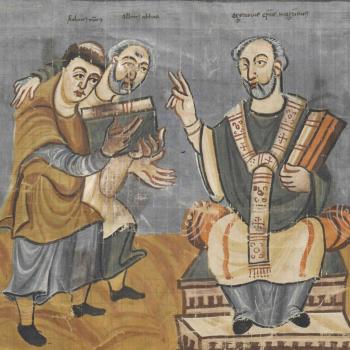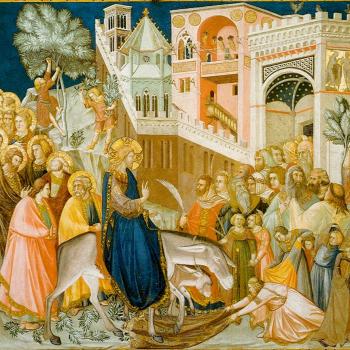Last time, I described the Book of the Giants. Probably written in the third or second centuries BC, this text is closely related to the Book of 1 Enoch and its story of fallen angels begetting monstrous offspring on human women. The book probably originated and circulated in the Jewish world, probably in the sectarian traditions we call “Enochic.” It was known at Qumran, and Aramaic fragments have been found among the Dead Sea Scrolls. Never, though, was it approved or widely known, in the later Rabbinic tradition that became the Jewish mainstream. (The Babylonian Talmud does cite one reference to Ohya, son of Semjaza, who is prominent in the Book of the Giants).
But if the book vanished from the Jewish world, it had an afterlife that was far-reaching, and quite puzzling. The Book of the Giants was venerated by the Manicheans, the Dualist religion formed in the third century AD by the Mesopotamian prophet Mani, which spread across Asia, and only perished in the seventeenth century. Mani extensively rewrote the text to express his own distinctive doctrines. In that form, the Manicheans treated the work as canonical, and through them (as we have seen) it circulated in a dozen languages. Possibly, they also liked it because its condemnation of the evil forces ruling the world meshed well with their own experience of persecution at the hands of worldly regimes: mani himself was executed, possibly crucified. The word Kawan, the name for the book’s Persian version, could mean either Giants or Tyrants.
That continuity – from the Jewish sectarian world into Manicheanism – is intriguing. It fits well with other evidence that suggests Mani’s links to older Jewish sectarian and Jewish-Christian baptismal movements like the Elchasaites. In turn, those “Babylonian Baptists” might even have had some kind of linkage with Qumran, and conceivably the Essenes. (Again, I have posted a few times on that theme). It is fascinating to think of the heritage of that long-dead Jewish sectarian world still flourishing in medieval Central and Eastern Asia: from Qumran into Turkestan.
Whatever we make of those possible connections, though, the Book of the Giants is significant enough in its own right for what it tells us about the growth of literary cultures. From the fifth century onwards, ancient Israel moved towards finding religious authority in texts and scriptures, rather than direct charismatic or prophetic inspiration. We see the emergence of a religion of the Bible, which achieved canonized form by around 200 BC.
Religious debate and speculation increasingly took the form of writing new texts and pseudo-scriptures, which took the familiar canonized stories and developed them according to contemporary needs and interests. It is scarcely too much to describe some of these pseudepigraphic and apocryphal works as fan fiction. To use another phrase not commonly used in Biblical scholarship, authors are taking known themes and freely riffing off them.
The Book of the Giants shows this process at work in highly developed form – I almost said, in full flood. Not only are writers developing stories, but they are doing so in amazingly florid form, creating whole new mythologies packed with abundant names and titles. Presumably, some authors are sitting down and inventing these names of demons and giants afresh, while others are taking those and adding their own contributions to the expanding mythos. As we know from modern-day fantasy writers, once that process begins, it rapidly spreads and expands. This is exactly what was happening in this same era with angels, who now acquired names and individual identities.
Just why authors are so committed to inventing names so prolifically is not obvious, but I have suggested elsewhere that this might be connected with magical practices. If you knew the names of demons or evil forces, you could invoke or combat them.
The Book of the Giants thus offers a wonderful snapshot of this literary universe as it would have existed in, say, the third or second centuries BC. If not for its chance survival at Qumran, would we ever have suspected the existence of this ornate mythos?
One major source on these themes is John C. Reeves, Jewish Lore in Manichaean Cosmogony: Studies in the Book of Giants Traditions (1992). For the Enochic heritage, see Nicholas J. Baker-Brian, Manichaeism: An Ancient Faith Rediscovered (Bloomsbury, 2011), especially pp. 86-89.
















